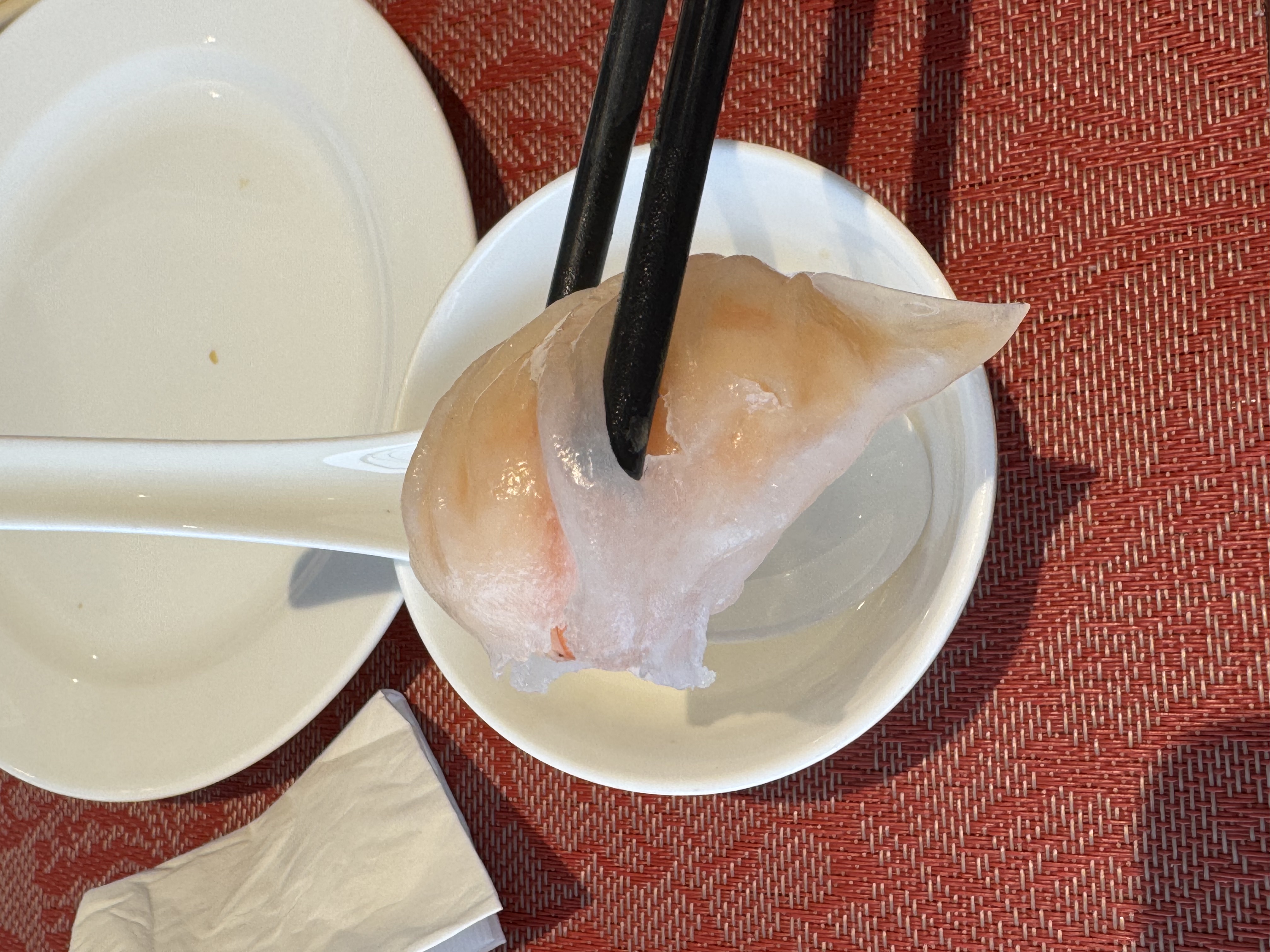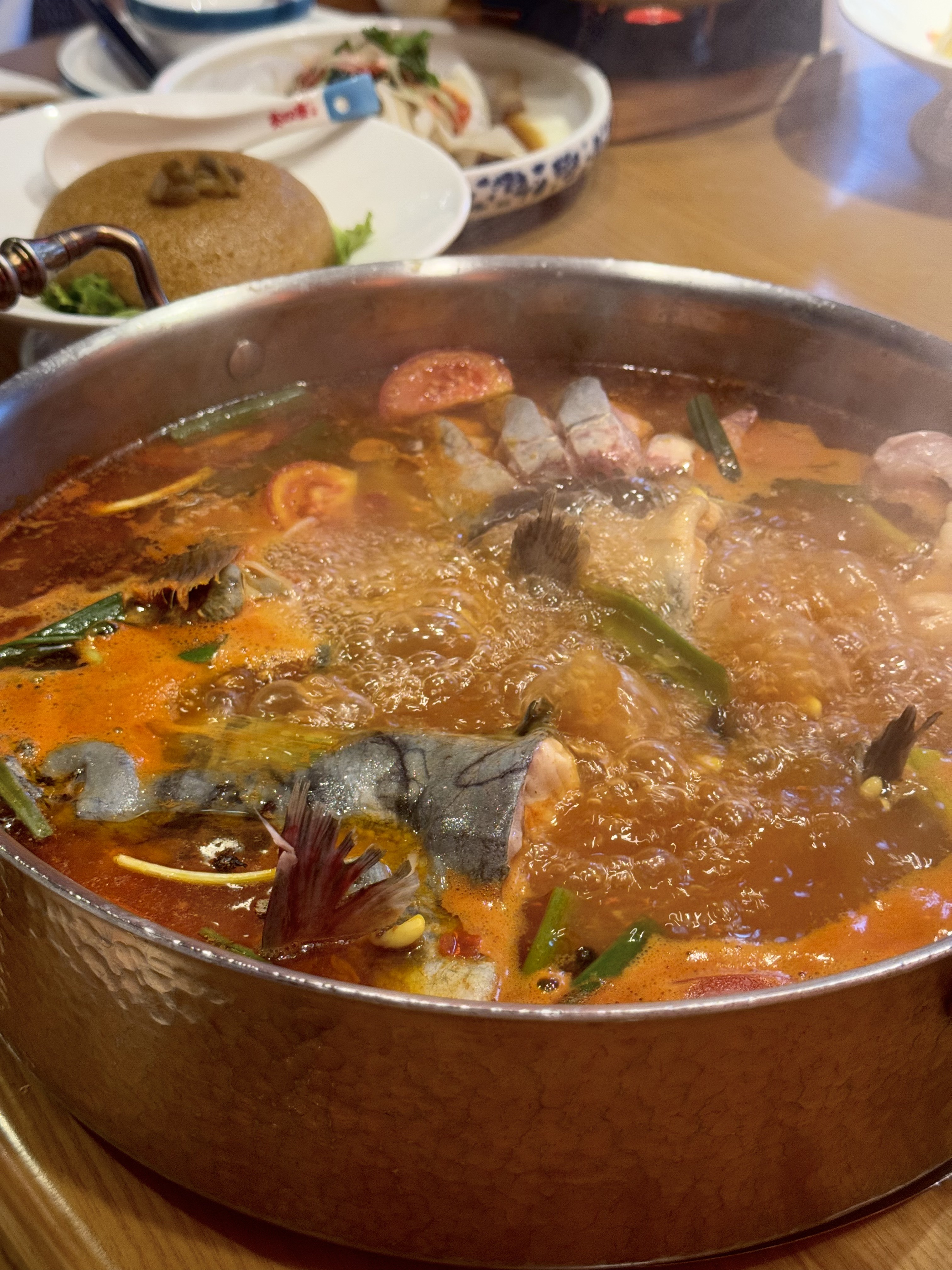Guiyang’s food mirrors the city’s geography and spirit — rugged, unpretentious, and joyfully rebellious. As I wrote before (Why the food here is so spicy…), history gave China Southwest people a deep bond with chili. Add to that the fact that Guiyang has never been a major economic, political, or trade hub, and you get a food culture that defies easy categorization — a kind of culinary anarchy.
In Guangzhou — arguably the city with the best food in China — cooking is treated like a form of high art. A single shrimp dumpling there has to follow an exact choreography: the skin must be translucent but elastic, the filling is expected to be ‘鲜’ and the shrimp inside sweet and bouncy. Like there’s a “right” way to do almost everything.

For example, the White Swan Hotel in Guangzhou is the holy pinnacle of dimsum and its shrimp dumpling is simply regarded as the BEST.
In Guiyang? Not so much. Here the only rule is: if it tastes good, it’s fair game. In Guangzhou fish needs to be fresh out of water and steamed, flavored with special-made soysauce — so that you taste its OG flavor. But here they are piled high in deep bowls, swimming in a scarlet broth heavy with chili flakes, pickled vegetables, and fried soybeans that give a crackling bite.
The dishes are often oil-heavy, carb-rich, and fiercely flavored, but they carry a kind of improvisational charm. You can taste the cook’s mood, the day’s market finds, and sometimes a little chaos — a handful of fresh herbs here, a splash of vinegar there. And nowhere is that spirit clearer than in three dishes that gleefully defy the so-called golden rules of eating:
糯米饭 (Glutinous Rice) – Bowls of steaming sticky rice topped with cured meats, crushed peanuts, and chili powder.

In our low-carb virtue era, this the opposite of restraint… but makes you really happy.
辣子鸡 (Chili Chicken) (wikipedia page): small chunks of fried chicken buried under mountains of dried chili and Sichuan peppercorns.

You don’t so much ‘find’ the chicken as dig for it.
酸汤鱼 (Sour Soup Fish) – Perhaps the most shocking to Cantonese sensibilities: fresh river fish simmered in a tomato-fermented sour broth.

To those used to treating fresh fish with the gentlest touch, this feels like heresy — yet the tangy, chili-spiked soup makes it unforgettable.
I used to think this meant the food wasn’t “good class.” But I’ve grown to understand and occasionally appreciate the mindset: food as a conversation between appetite and instinct, and also, what our budget allows.